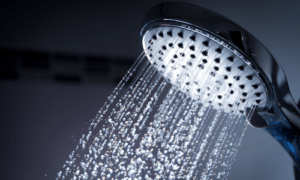Imagine turning on the faucet, only to be greeted by a weak trickle instead of a steady stream. Whether you’re rinsing dishes, taking a shower, or trying to water the garden, low water pressure can make even the simplest tasks frustrating. But you’re not alone—this common plumbing issue affects countless homeowners.
The good news is that low water pressure is often fixable, and the solutions can be straightforward. Before you pick up the phone to call a plumber, it’s worth investigating the root causes yourself. From cleaning clogged aerators to inspecting your pressure regulator, this guide will walk you through the steps to restore your home’s water flow and make life easier again.
1. Check Aerators and Showerheads: A Common Culprit
One of the first places to check when dealing with low water pressure is your faucets and showerheads. Over time, mineral deposits such as calcium and lime can build up inside these fixtures, restricting the flow of water.
How to Identify the Problem
 Does only one faucet or showerhead have low pressure?
Does only one faucet or showerhead have low pressure?- Is there visible white or green residue on the fixture?
If the answer is yes, the problem likely lies with the aerator or showerhead.
Solution
- Remove the aerator or showerhead. Most unscrew easily by hand or with pliers.
- Soak the component in white vinegar overnight. This helps dissolve the mineral buildup.
- Scrub any remaining deposits with a toothbrush.
- Rinse thoroughly and reattach.
Pro Tip
Prevent future buildup by installing a water softener, especially if your home has hard water. This can extend the life of your plumbing fixtures and maintain steady water pressure.
2. Inspect the Pressure Regulator: A Hidden Factor
Your home’s water pressure regulator plays a key role in controlling the amount of pressure coming into your plumbing system. If this device malfunctions, it can lead to either low water pressure or excessive pressure that damages pipes.
How to Identify the Problem
- Are all the fixtures in your home experiencing low water pressure?
- Has your water pressure dropped suddenly?
These symptoms often point to a faulty regulator.
Solution
- Locate the pressure regulator, typically found near the main water supply line.
- Check the regulator for visible signs of damage or wear.
- Use a pressure gauge to measure water pressure. Ideal pressure ranges between 40–60 PSI (pounds per square inch).
- If the regulator isn’t functioning properly, it may need replacement.
Pro Tip
Replacing a pressure regulator often requires professional help. If you’re unsure about handling this task, consult a licensed plumber.
3. Look for Leaks: The Silent Drain on Pressure
Sometimes, low water pressure is caused by a hidden leak in your plumbing system. These leaks not only reduce water pressure but can also lead to costly water bills and structural damage if left unaddressed.
How to Identify the Problem
- Have you noticed unexplained damp spots on walls or ceilings?
- Are your water bills higher than usual without increased usage?
- Do you hear the sound of running water even when all fixtures are off?
If any of these signs are present, you may have a leak.
Solution
- Inspect visible pipes for dripping or pooling water.
- Check under sinks, around appliances, and in basements or crawl spaces for signs of leaks.
- Shut off all water-using devices and check your water meter. If the meter continues to move, you likely have a leak.
Pro Tip
Hidden leaks often require professional equipment and expertise to locate and repair. If you suspect a leak but can’t find the source, call a plumber to avoid further damage.
4. Test the Main Shutoff Valve: A Simple Fix
Sometimes the issue with low water pressure comes down to a simple oversight: the main shutoff valve is partially closed. This can happen accidentally during routine maintenance or after plumbing repairs.
How to Identify the Problem
- Is water pressure low across your entire home?
- Has there been recent work on your plumbing system?
If the answer is yes, checking the main shutoff valve should be your next step.
Solution
- Locate the main shutoff valve. It’s usually near the water meter or where the main supply line enters your home.
- Ensure the valve is fully open by turning it counterclockwise as far as it will go.
- Test your water pressure again.
Pro Tip
Label your shutoff valve clearly and make sure everyone in your household knows its location. This can save precious time during a plumbing emergency.
When DIY Isn’t Enough: Calling in the Professionals
While many causes of low water pressure can be fixed with a bit of DIY effort, some problems require professional expertise. Persistent low pressure, corroded pipes, or issues with the municipal water supply may demand more advanced tools and repairs.
A plumber can:
- Perform a detailed inspection of your plumbing system.
- Test for complex issues like pipe corrosion or water supply inconsistencies.
- Recommend upgrades, such as repiping or installing a booster pump, to improve long-term water pressure.
Preventing Low Water Pressure in the Future
Regular maintenance can help you avoid water pressure problems down the line. Here’s how to keep your plumbing system in top shape:
- Clean faucet aerators and showerheads every few months.
- Flush your water heater annually to prevent sediment buildup.
- Inspect pipes and valves for wear or leaks during routine home checks.
- Monitor your water bills for unusual spikes that could indicate a leak.
By staying proactive, you can ensure consistent water pressure and avoid the frustration of sudden drops.
Conclusion: A Steady Flow of Solutions
Low water pressure doesn’t have to be a source of endless frustration. By identifying the common causes—like mineral buildup, faulty pressure regulators, hidden leaks, or partially closed valves—you can take simple steps to restore your home’s water flow.
Whether you’re a seasoned DIYer or someone who prefers to leave the repairs to the pros, understanding the root causes of low water pressure is the first step toward solving the problem. With a bit of effort and regular maintenance, you can keep your plumbing system running smoothly and enjoy the steady stream of water you need for everyday life.
When in doubt, don’t hesitate to call a licensed plumber to tackle more complex issues. After all, a well-functioning plumbing system is essential to a comfortable home.


